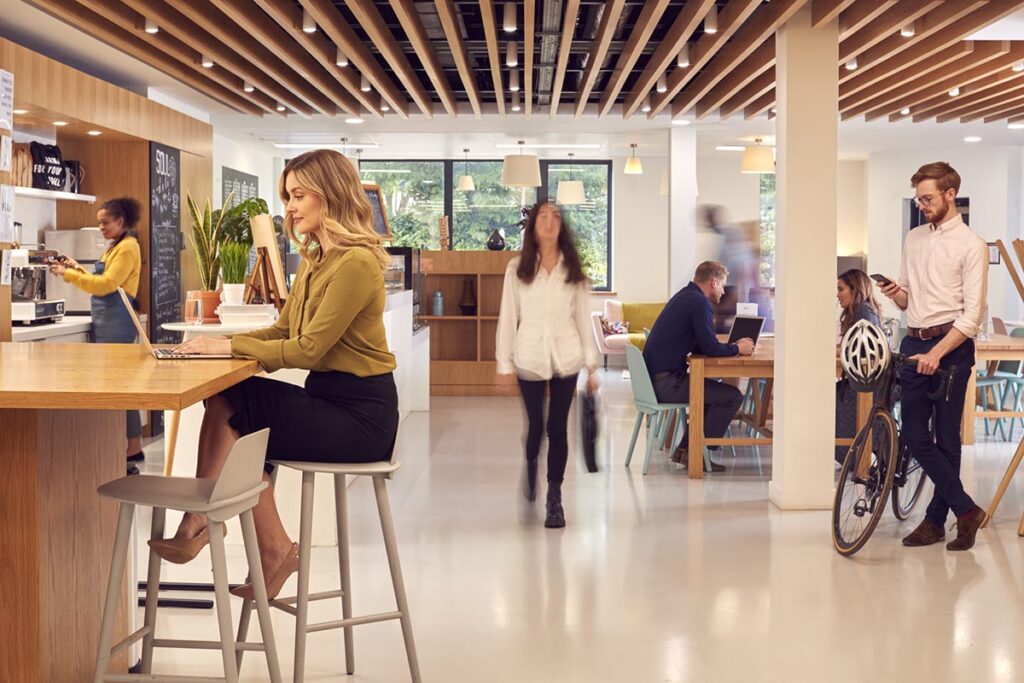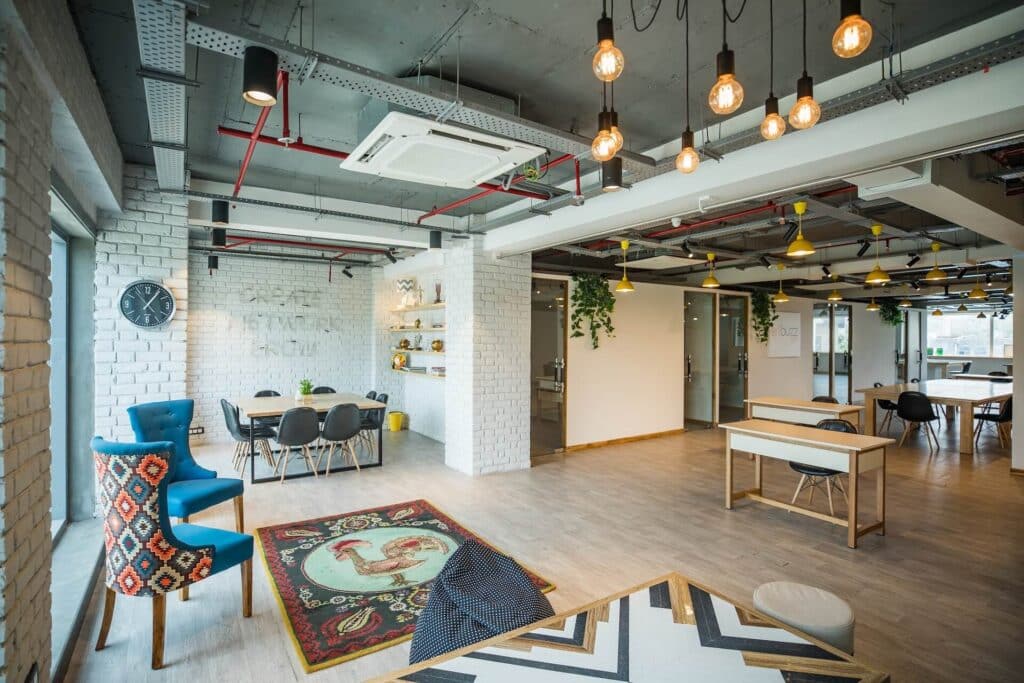Top strategies for hybrid office space planning
Discover the new metrics, benchmarks, and design approaches top teams are using to optimize their real estate portfolios and employee experience in the hybrid workplace.

Modern metrics measure reality.
Hybrid is here to stay. We sat down with industry experts Susan Wasmund, Head of CBRE’s Global Workplace & Occupancy Management practice, and Maya Katter, VP of Client Success at OfficeSpace, to uncover common myths that could be hindering your hybrid office. With over 45 years combined experience advising the world’s top brands, they explore reframing your approach to hybrid using metrics that matter now.
MYTH #1
Planning your office space based on headcount.
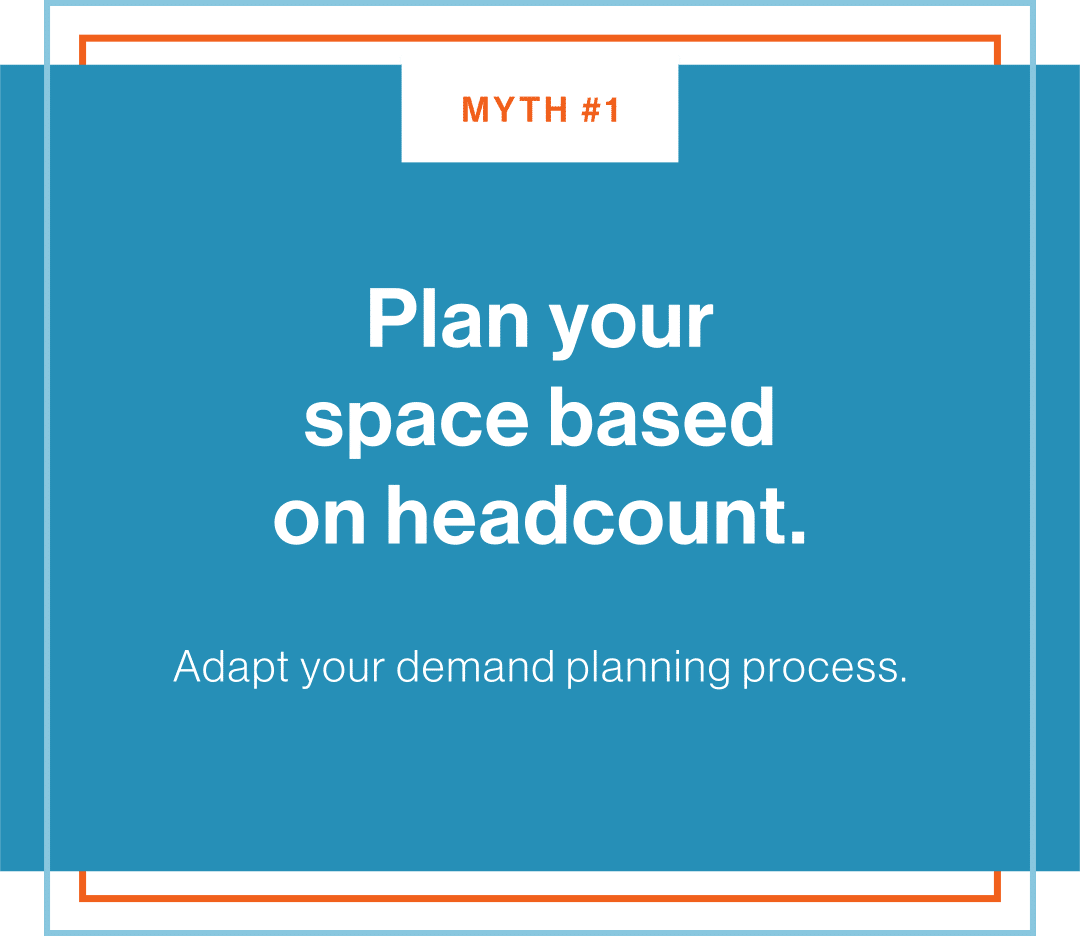
With employees working from home and in-office today, planners need new ways to forecast space needs and demand:
- 50% of desk bookings within OfficeSpace are made last-minute
- Peak days see up to 150-250% more desk bookings than average days
- 33% of companies now have a seat sharing ratio of >1.5:1
The more flexible an organization’s hybrid work policy, the more variable demand for space will be. Facility managers (FMs) and space planners need new ways to plan for this new reality.
To learn utilization metrics can inform your workplace strategy.
MYTH #2
Measuring your space based on density
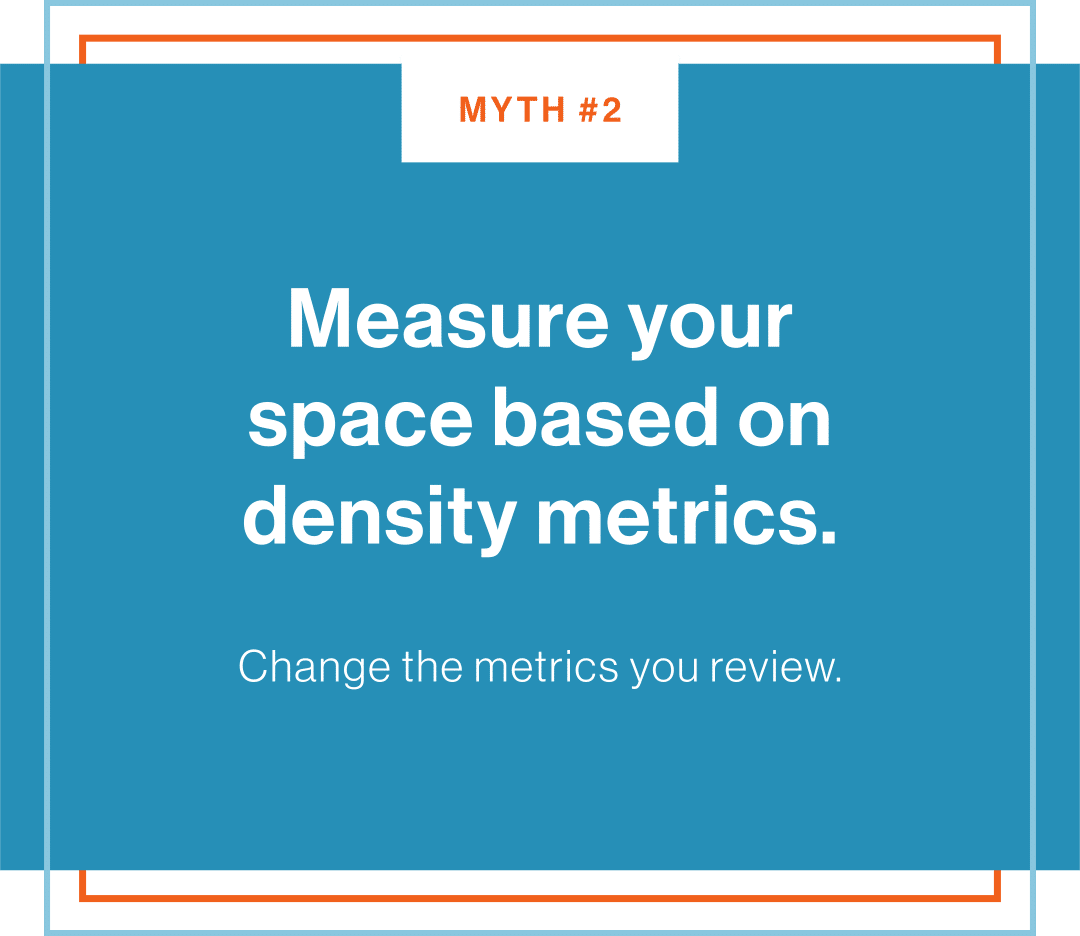
Traditional density metrics aren’t effective at measuring the use of hybrid space or reflect the reality of how spaces are actually being used in a dynamic work environment.
Measure how efficient and effective your space actually is, by using more modern metrics, that create a clear picture of your space needs, answering questions such as:
- How can the size and purpose of the office better meet employee needs?
- How can workplace design help to maintain or enhance productivity?
- How can we address company goals around culture and collaboration?
- How much capacity do I need at a given site? Could we sublease a floor?
And discover which micro and macro metrics to measure now.
Get more out of your space, and connect the people in it
MYTH #3
Using established benchmarks for designing space
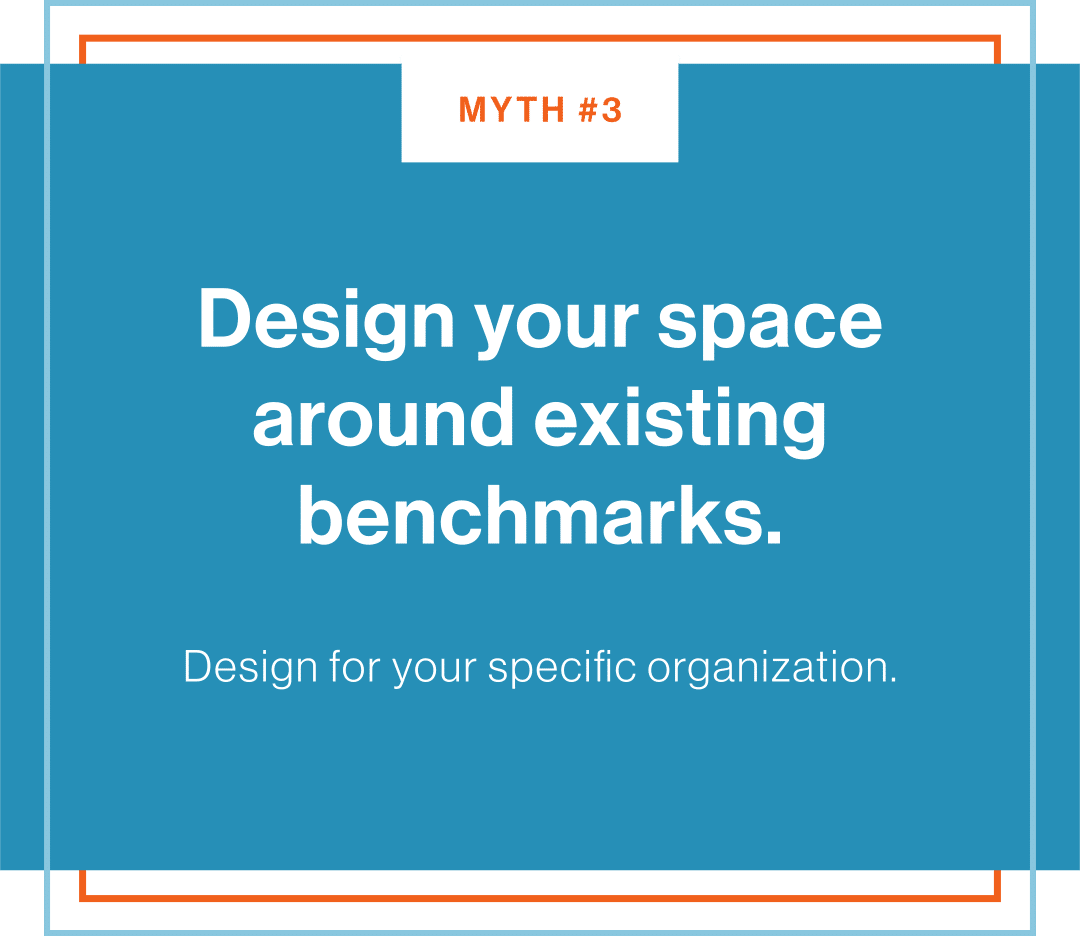
Benchmarking against other organizations for space planning is no longer relevant. In a hybrid world, there‘s no ‘one size fits all’ solution across industries. ‘One size fits all’ may not even work within a company.
Designing hybrid office spaces now means managing a host of competing interests and factors, including:
- Job functions and team requirements
- Demographics
- Geographies
- Culture
- Purpose
- Budget
To support the unique business and cultural objectives of their organizations look internally to align with company goals.
And discover today’s benchmarks for space management.
MYTH #4
Hybrid work requires capital improvements and renovations
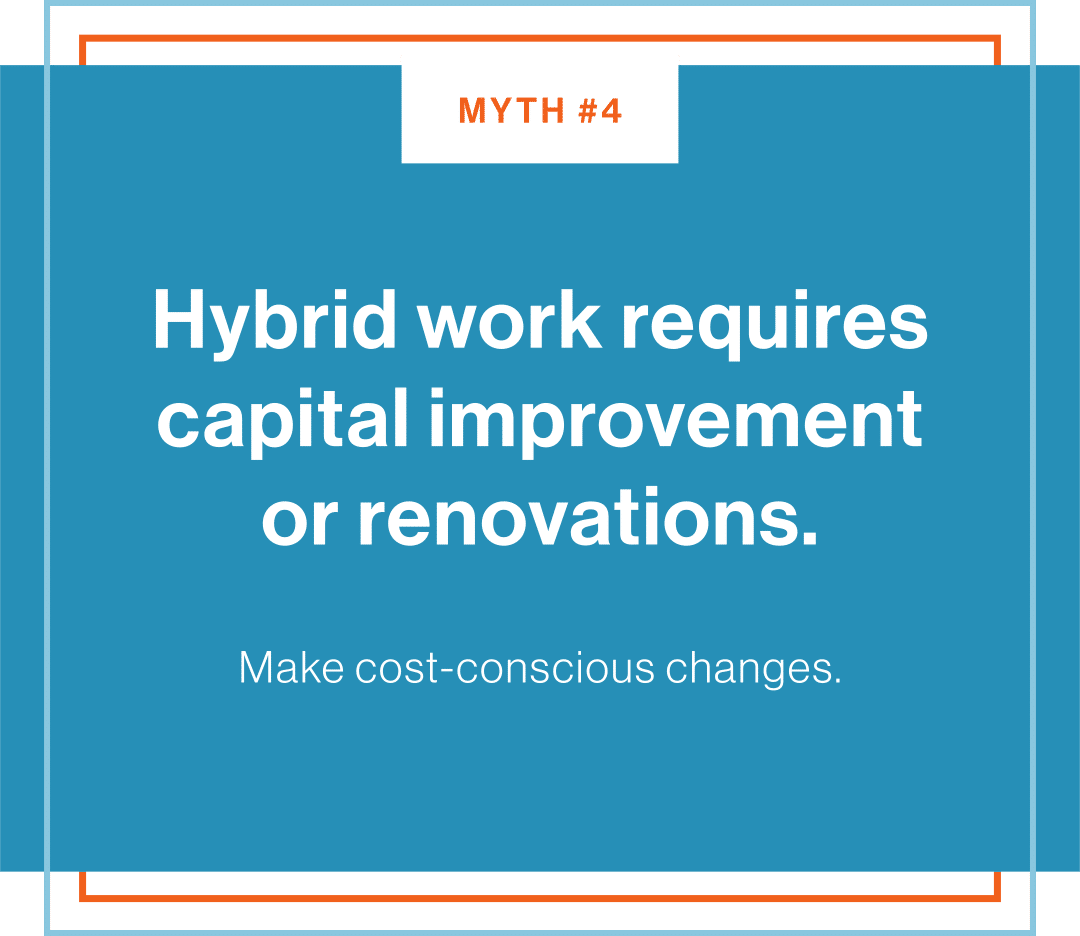
Companies are juggling tension between economic uncertainty, and the need to invest in space improvements that support collaboration and attract employees to the office. FMs and space planners can optimize office space planning without expensive investments, if they’re able to leverage existing data to see office use trends across:
- Teams
- Departments
- Sites
- Cost Centers
Armed with the right utilization data, organizations can make great hybrid spaces that are engaging and effective, without risky or expensive investments.
And start leveraging your existing space.
MYTH #5
Hybrid work requires complicated technology

Perhaps the biggest myth about hybrid work is that it requires complicated technology to implement, measure, and optimize.
Some organizations are already collecting data that can be repurposed and combined as part of a ‘test before you invest’ strategy for hybrid. To improve employee experience and workplace management, many companies already collect:
- Desk and meeting room reservations, check-ins, and cancellations
- Badge swipe data
- Wifi logs
By combining and analyzing this real-time data properly, companies can implement and test better strategies to ensure spaces support business performance.
To discover how OfficeSpace simplifies testing, measuring, and adjusting your hybrid strategy.
Frequently asked questions
Get answers to some of the most common hybrid workplace questions
Other upcoming webinars
Unlock the power of presence data
All Webinars Unlock the power of your presence data Explore how OfficeSpace software’s innovative presence.
Unlock the power of your presence data
All Webinars Unlock the power of your presence data Explore how OfficeSpace software’s innovative presence.
Playbook for Hybrid Workplace Success
All Webinars Hybrid workplace change strategies Hear Plastarc Founder and Executive Director Melissa Marsh and.
Hybrid Workplace Change Strategies
All Webinars Hybrid workplace change strategies Johanna Rodriguez & Surabhi Raman from Savills join Workplace.


